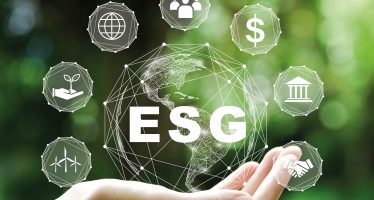Troy Wiseman: Bamboo – A Sustainable Source of Fibre
 Over the last ten years, REDD (Reducing Emissions from Deforestation and Forest Degradation) and REDD+ developments have proved that the price attributed to, and the willingness to pay for, forest based ecosystem services – whether through compliance or voluntary schemes – is unlikely to ever compete with the market price for wood and fibre sourced from the deforestation and degradation of the world’s remaining natural forests.
Over the last ten years, REDD (Reducing Emissions from Deforestation and Forest Degradation) and REDD+ developments have proved that the price attributed to, and the willingness to pay for, forest based ecosystem services – whether through compliance or voluntary schemes – is unlikely to ever compete with the market price for wood and fibre sourced from the deforestation and degradation of the world’s remaining natural forests.
Although project level benefits may be significant, so long as demand continues and a thriving market provides attractive returns on the harvesting of natural forests, leakage is inevitable, and truly quantifiable REDD+ in many nations will be hard to achieve. The math is simple: plantation forests still supply only a fraction of our fuel and fibre needs, and without an alternative, at the global scale the degradation will continue, although the actual location may shift. Therefore addressing the drivers of deforestation, a premise on which REDD was built, through the provision of sustainable and long term alternatives is critical.
“Bamboo provides a fibre that reduces pressure on natural forests.”
US-based EcoPlanet Bamboo is industrialising bamboo produced under stringent protocols and procedures and developed around a framework of positive social and environmental impact. It is a private sector mechanism that has the potential to contribute towards addressing a major driver of deforestation, regenerate fragmented forest ecosystems, and restore ecosystem functions. Through such a mechanism, and through the provision of certified bamboo fibre to the industries that currently drive deforestation, commercially produced bamboo can be one piece of the puzzle in moving the REDD+ agenda forward, all while sequestering and storing significant volumes of atmospheric CO2.
The ultimate goal is to address the simple supply and demand for wood and fibre within a tangible timeframe and under a framework that this “alternative” fibre is produced only in a way that meets market demand, without the associated environmental cost. As such, it constitutes, a private sector solution that is economically viable and satisfies the world’s need for fibre.
Fibres are used in everything from consumer items such as toilet paper, tissue, and kitchen paper to clothing and textiles and from engineered timber for construction, housing, and furniture to charcoal and other fuel products.
Bamboo has traditionally been an enigma for policy makers, foresters, and environmentalists. Ecologically speaking, the 1,200 plus species of bamboo are part of the grass family but the biomass the plant produces is a wood-like fibre with properties that mirror those of many traditional wood species from hardwoods to softwoods.
Once mature, bamboo grows extraordinarily fast with new stems or culms emerging annually and removed biomass being replaced annually. Statements and online media that sell bamboo as maturing within three years, not requiring pesticide or fertiliser, or other claims of bamboo as a miracle plant are completely unfounded. Like any other crop being produced commercially, bamboo requires a stringent management regime and many inputs.
In the context of REDD+, bamboo’s greatest advantage in addition to being an alternative fibre for timber-dependent industries, is its ability to be grown on degraded and marginal land. As a crop, it does not undermine food security and produces vast volumes of fibre without the need for replanting. Bamboo provides a fibre that reduces pressure on natural forests, whether that represents fibre to replace the kraft pulp currently used in toilet paper and sourced from old growth boreal forests in Canada and Russia or fibre that replaces dissolving pulp for textiles and clothing which is currently sourced from the clearing of primary tropical forests in Indonesia and elsewhere. It can also be used as a valuable tool for the successful restoration of ecosystems, particularly if native species are grown. Within a six to eight year period – depending on the level of soil degradation and the ability to understand and execute a set of unique protocols – bamboo creates a continuous and permanent canopy cover. Its strong root system breaks up compacted soil and provides water filtration benefits, restoring water tables and managing water cycles and increases organic soil carbon and nutrient levels. As EcoPlanet’s VCS-validated and verified projects in Nicaragua have shown, bamboo can sequester and store up to 800 tons of CO2 per hectare.
However, stringent controls are required to ensure that bamboo remains a tree-free, deforestation-free solution. To achieve this, EcoPlant believes in certification and independent auditing as a means to determine a global benchmark for bamboo’s commercial production as well as robust REDD+ safeguards with clearly defined policies, laws, and regulations. Quantifiable carbon (whether as a REDD+ initiative or as a straightforward Afforestation/Reforestation project), social and biodiversity impacts are criteria for the company’s projects, as is Forest Stewardship Council (FSC) certification for the sustainable management of the bamboo resource itself. If done correctly, and this framework adhered to as projects increase in both scale and scope, bamboo could prove to be an economically viable mechanism to achieve the core components of REDD+.
You may have an interest in also reading…
Otaviano Canuto: Macro-economic Policy Change – We’re Not in Kansas Any More
The possibility of multiple financial shocks lies ahead. Three significant changes to the macro-economic policy regime in advanced economies have
The Local Climate Adaptive Living Facility (LoCAL) of UNCDF: Climate Change Impacts on Natural and Human Systems
“For women, the road was crucial. It was hard to deliver babies because of access: we had to go to
Evan Harvey, Nasdaq: Language Locks and Building Blocks
Language has been an inhibitor to the progress of sustainable business. Rather than putting a trendy new name on an


















































































